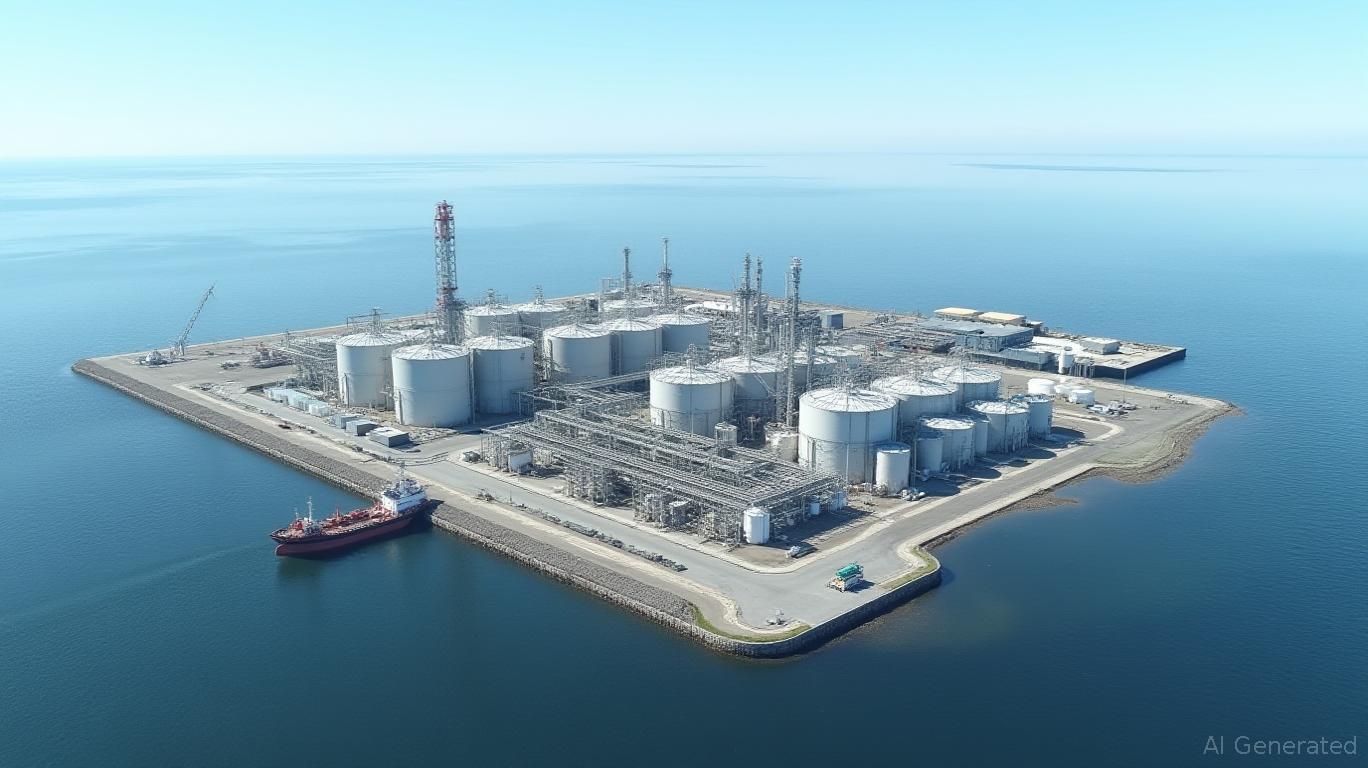Matrix Service Company (MTRX): Riding the LNG Infrastructure Wave to Growth
The global energy transition is accelerating, and liquefied natural gas (LNG) is emerging as a critical bridge fuel to decarbonize heavy industries like maritime transport and power generation. As governments worldwide enforce stricter emissions regulations and nations seek energy independence, demand for LNG infrastructure—particularly small-scale export terminals and bunkering facilities—is surging. Among the companies positioned to capitalize on this trend is Matrix Service Company (NASDAQ: MTRX), a specialized engineering, procurement, and construction (EPC) contractor with a unique expertise in cryogenic LNG infrastructure. Despite its strategic advantages, MTRX remains underappreciated by the market, offering investors a compelling entry point ahead of a multiyear LNG infrastructure boom.
The LNG Infrastructure Gold Rush: Drivers and Opportunities
Three key trends are fueling demand for LNG infrastructure:
1. Decarbonization Policies: The International Maritime Organization's (IMO) 2030 target to reduce greenhouse gas emissions by 40% and the EU's sulfur caps are driving a shift from heavy fuel oil to LNG in maritime transport. By 2030, 30% of global shipping could rely on LNG, according to DNV, requiring 150 new bunkering facilities globally.
2. U.S. LNG Export Growth: The U.S. has become the world's top LNG exporter, shipping 16.4 Bcf/d in 2025. Biden-era policies, despite initial regulatory hurdles, now support LNG's role in energy security and emissions reduction, while the reversal of restrictive bunkering rules under the Trump administration has further cleared the path.
3. Maritime Fuel Transition: LNG is now the preferred fuel for newbuild container ships and car carriers, with 70% of global LNG-fueled vessel orders placed in 2024. This shift demands配套 infrastructure, including coastal terminals and bunkering hubs like Jacksonville, Florida.

Why Matrix Service (MTRX) Stands Out
MTRX is no ordinary construction firm. Its cryogenic engineering expertise, honed over decades in refining and petrochemical projects, positions it as a leader in LNG infrastructure. Key advantages include:
1. Cryogenic and Marine Infrastructure Mastery
- MTRX's turnkey solutions for small-scale LNG terminals leverage Chart Industries' IPSMR® technology, which reduces costs by eliminating hydrocarbon refrigerants. This is critical for projects like the $500M Jacksonville LNG Export Facility, where MTRX is the EPFC contractor. The facility will produce 1.65M gallons/day of LNG, supplying Crowley Marine's dual-fuel vessels and Caribbean markets.
- The company's work on the Talleyrand LNG Bunker Station in Jacksonville exemplifies its ability to integrate marine terminals with LNG storage, enabling ship-to-ship bunkering—a key enabler for global LNG adoption.
2. Strategic Project Pipeline
- Veracruz LNG Terminal (Mexico): MTRX is executing engineering and construction for 12 tanks at IEnova's liquid fuels terminal, part of Mexico's $10B liquids market expansion. This project leverages U.S. shale gas and strengthens North American energy integration.
- Wildhorse Terminal (Oklahoma): A 4.5M-barrel crude oil storage and blending hub underscores MTRX's versatility in energy infrastructure, complementary to LNG projects.
- Backlog Strength: MTRX's backlog exceeds $1.2B, with 70% tied to energy transition projects, including LNG terminals and carbon capture systems.
3. Alignment with U.S. Energy Policy
- Despite Biden's initial 2024 pause on LNG export approvals, the DOE's 2024 study affirmed LNG's public interest role in emissions reduction and energy security. The subsequent reversal of bunkering restrictions under the Trump administration has further de-risked projects like Jacksonville.
- MTRX's focus on small-scale, regional LNG facilities aligns with the Biden administration's emphasis on avoiding “boil-off” waste and supporting Caribbean markets over large-scale export terminals.
Why MTRX Is Underappreciated—and Undervalued
Despite its strategic position, MTRX trades at a 1.2x EV/EBITDA multiple, well below its EPC peers (average 2.5x). This discount reflects market skepticism toward near-term LNG project execution risks, including permitting delays and commodity price volatility. However, three catalysts could narrow this gap:
1. DOE Permitting Reforms: The 2025 reversal of restrictive LNG bunkering rules and accelerated export approvals could unlock $1.5B in backlog projects.
2. Earnings Visibility: MTRX's Jacksonville and Veracruz projects are on track for 2025-2026 completion, with guaranteed revenue streams under fixed-price contracts.
3. ESG Credibility: The company's focus on safety and sustainability—evident in its 0% fatality rate over five years—aligns with investor demand for ESG-compliant infrastructure.
Risks and Mitigation
- Regulatory Volatility: Future policy shifts, particularly under new administrations, could delay projects. However, bipartisan support for LNG's energy security role limits extreme risks.
- Commodity Price Fluctuations: Lower natural gas prices could reduce project economics, but MTRX's fixed-price contracts shield it from volatility.
Investment Thesis
Buy MTRX on dips, targeting entry at $12–$13/share. A $16–$18 price target (20%–50% upside) reflects backlog conversion and valuation re-rating. Hold for 1–3 years to capture the LNG infrastructure wave.
Conclusion
Matrix Service is a hidden gem in the energy transition story. Its niche expertise in LNG infrastructure, coupled with a strong project pipeline and regulatory tailwinds, positions it to outperform as the world shifts toward cleaner maritime fuels and U.S. LNG dominance. With a backlog-to-market cap ratio of 1.5x, MTRX offers asymmetric upside for investors willing to look beyond near-term noise. This is a play on infrastructure resilience—and the coming LNG boom.
Investment recommendation: Buy MTRX with a 12–18 month horizon.

Comments
No comments yet